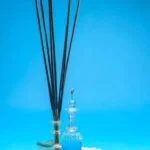Aromatherapy heat packs are a popular and effective way to relieve stress, ease muscle pain, and promote relaxation. These versatile packs can be used in various ways, making them a valuable addition to any self-care routine. In this article, we will explore the benefits of aromatherapy heat packs and provide a comprehensive guide on how to make your own at home.
Aromatherapy heat packs are essentially fabric pouches filled with materials such as rice or flaxseed, which can be heated and infused with essential oils. When applied to the body, they provide soothing warmth and the therapeutic benefits of aromatherapy. Whether you’re looking for natural remedies for headaches, tension relief, or simply want to unwind after a long day, aromatherapy heat packs offer a holistic approach to wellness.
In the following sections, we will discuss the best fabrics and fillings for creating your own heat packs, delve into the world of essential oils and their therapeutic effects, provide step-by-step instructions on how to make your own aromatherapy heat pack at home, along with tips for using and caring for them safely.
Additionally, we’ll explore different ways to use aromatherapy heat packs for stress relief, muscle pain, and relaxation while also discussing how you can personalize your heat packs with custom blends.
Whether you’re new to the world of aromatherapy or looking for alternative options in heat pack designs and styles – this article has got you covered.
Selecting the Right Materials
When it comes to making aromatherapy heat packs, selecting the right materials is crucial in order to create a product that is effective and safe for use. The first step in choosing the best fabrics and fillings for your heat packs is to consider the purpose of the pack. Are you making it for stress relief, muscle pain, or relaxation? This will help determine the type of fabric and filling that will best suit your needs.
For the fabric, it’s important to choose a material that is soft, durable, and can withstand heat. Cotton and flannel are popular choices for aromatherapy heat packs as they are gentle on the skin and easy to work with. Additionally, these fabrics retain heat well and provide a comforting feeling when placed on the body. It’s also essential to ensure that the fabric is clean and free from any dyes or chemicals that could cause irritation.
When it comes to fillings, there are several options to consider. Rice and flaxseed are commonly used as fillings for aromatherapy heat packs due to their ability to retain heat for extended periods of time. These natural fillings also have a pleasant scent when heated, adding an aromatic element to the pack.
Other options include cherry pits, buckwheat hulls, or even essential oil-infused beads. Consider experimenting with different fillings to find the one that best suits your preferences and needs.
Taking the time to carefully select the right materials for your aromatherapy heat packs will ensure that you create a product that is not only effective but also safe for use on yourself or others. By using high-quality fabrics and fillings, you can enhance the overall experience of using these therapeutic packs while reaping their many benefits.
So now you know how important it is to choose the right fabrics and fillings for your aromatherapy heat packs. Just remember – always prioritize safety by ensuring that your chosen materials are clean, non-toxic, and suitable for heating.
Essential Oils 101
Aromatherapy heat packs are a popular and effective way to experience the benefits of essential oils while also enjoying the soothing and healing effects of heat therapy. When using aromatherapy heat packs, it’s important to have a good understanding of different essential oils and their therapeutic effects in order to create a blend that suits your specific needs.
There are many different types of essential oils, each with its own unique properties and potential benefits. For example, lavender is known for its calming and relaxing effects, making it a popular choice for stress relief and promoting better sleep. On the other hand, peppermint oil has invigorating and cooling properties that can help alleviate headaches and muscle pain.
When creating your own aromatherapy heat packs, consider the specific benefits you are looking for. Are you seeking relaxation, stress relief, pain relief, or something else? Once you’ve identified your needs, you can select the appropriate essential oils to include in your heat pack blend.
To make aromatherapy heat packs at home, start by selecting the materials that best suit your preferences. Choose a fabric that is comfortable against the skin and able to withstand the heat from microwaving or other heating methods. Additionally, select fillings such as rice or flaxseed that can hold heat effectively. Then follow these steps on how to make aromatherapy heat packs:
- Cut two identical pieces of fabric into a shape (rectangle or square) of your choice.
- Sew three sides together, leaving one side open for filling.
- Mix your selected essential oils with the filling material.
- Fill the fabric pouch with the scented filling.
- Sew or glue the remaining side closed securely.
By understanding different essential oils and their therapeutic effects when making aromatherapy heat packs at home allows for customization tailored to specific needs which maximize their benefits.
| Essential Oil | Therapeutic Effects |
|---|---|
| Lavender | Calming and relaxing; promotes better sleep |
| Peppermint | Invigorating and cooling; helps alleviate headaches and muscle pain |
Step-by-Step Guide
Aromatherapy heat packs are a great way to relieve stress, soothe muscle pain, and promote relaxation. Making your own aromatherapy heat pack at home is a simple and cost-effective way to enjoy the benefits of aromatherapy. In this section, we will provide a step-by-step guide on how to make your own aromatherapy heat packs at home.
First, you will need to gather the necessary materials and supplies. These include fabric for the outer covering, such as cotton or flannel, and filling material, such as rice or corn. You will also need essential oils for aromatherapy purposes. Popular choices include lavender for relaxation, eucalyptus for sinus relief, and peppermint for muscle pain.
Once you have all your materials ready, you can start by cutting the fabric into two equal-sized rectangles. Then, place the two fabric pieces together with the patterned side facing inwards. Sew three sides of the fabric together using a sewing machine or needle and thread, leaving one side open for filling. Turn the fabric inside out so that the pattern is now on the outside.
Next, mix your chosen essential oil with the filling material. For every cup of filling material, add 10-15 drops of essential oil and mix thoroughly. Then, carefully fill the fabric pouch with the scented filling material until it is about three-quarters full. Finally, sew up the open end of the pouch to secure the filling inside.
| Materials | Supplies |
|---|---|
| Fabric (cotton or flannel) | Sewing machine or needle and thread |
| Filling material (rice or corn) | Essential oils (lavender, eucalyptus, peppermint) |
Safety First
When using aromatherapy heat packs, it is important to prioritize safety to ensure that you can enjoy their benefits without any potential risks. Here are some tips for using and caring for your aromatherapy heat packs:
- Follow the instructions: Always read and follow the manufacturer’s instructions for heating and using your heat pack. This will prevent any overheating or misuse of the product.
- Check for damage: Before using your heat pack, inspect it for any signs of damage such as rips, tears, or leaks. Using a damaged heat pack can result in exposure to filling materials or essential oils.
- Monitor temperature: When heating your aromatherapy heat pack in the microwave or oven, be sure to monitor the temperature to avoid overheating. Overheating can lead to burns or damage to the heat pack.
In terms of caring for your aromatherapy heat packs:
- Spot clean only: Follow the specific care instructions provided with your heat pack, as some may only be spot cleaned. Avoid submerging them in water or machine washing to prevent damage to the fabric and filling.
- Store properly: When not in use, store your aromatherapy heat packs in a cool, dry place away from direct sunlight. This will help preserve the integrity of the fabric and prolong the effectiveness of the essential oils.
- Replace when needed: Over time, the scent of the essential oils in your heat pack may fade. If this happens, consider replacing or refreshing the essential oils to continue enjoying their therapeutic effects.
By following these safety tips and proper care guidelines, you can ensure that your aromatherapy heat packs remain effective and safe for regular use.
Overall, taking these precautions will allow you to make effective use of them through regular wear while maintaining a longer life span.
Different Ways to Use Aromatherapy Heat Packs for Stress Relief, Muscle Pain, and Relaxation
Aromatherapy heat packs are not only great for providing warmth, but they can also be infused with essential oils to provide therapeutic benefits. These heat packs can be used in various ways to help alleviate stress, muscle pain, and promote relaxation. Here are a few different ways you can use aromatherapy heat packs for these purposes.
Stress Relief
One of the best ways to use aromatherapy heat packs for stress relief is to place them on your neck and shoulders. The warmth from the pack, coupled with the calming effects of the essential oils, can help soothe tension in these areas and promote relaxation. Simply heat up the pack and drape it over your neck and shoulders while taking deep breaths to fully experience the benefits of aromatherapy.
Muscle Pain
Aromatherapy heat packs can also be used to ease muscle pain and discomfort. For specific areas of muscle pain, such as the lower back or legs, simply apply the heated pack directly to the affected area. The combination of heat and essential oils can help alleviate soreness and improve blood circulation, providing relief from muscle pain.
Relaxation
In addition to using aromatherapy heat packs for stress relief and muscle pain, they can also be used to promote overall relaxation. Whether you’re in need of a little self-care or want to enhance your meditation or yoga practice, placing a warm aromatherapy heat pack on your chest or abdomen can create a soothing and calming experience.
The gentle warmth along with the scent of essential oils can help calm your mind and relax your body, making it easier to unwind after a long day.
By incorporating aromatherapy into your heat pack usage, you can turn a simple warming tool into a multi-purpose wellness aid that promotes relaxation, relieves stress, and soothes muscle pain.
Customizing Your Aromatherapy Heat Packs
Choosing Personalized Fabrics and Designs
When creating your own aromatherapy heat packs, one of the most enjoyable aspects is customizing them to your personal taste. You can choose fabrics that reflect your style, favorite colors, or even a specific theme that resonates with you.
Look for high-quality, natural fabrics like cotton or linen that are soft to the touch and will hold up well after multiple uses. Consider adding a personal touch by incorporating unique designs, patterns, or even sewing on decorative elements like buttons or beads.
Creating Custom Aromatherapy Blends
Aromatherapy heat packs not only provide soothing warmth but also offer therapeutic benefits through the use of essential oils. You can personalize your heat packs further by creating custom blends of essential oils that cater to your specific needs. For example, if you struggle with stress and anxiety, you may opt for calming oils like lavender and chamomile.
On the other hand, if muscle pain is a concern, soothing oils such as peppermint and eucalyptus could be beneficial. Experiment with different oil combinations to find the aroma and effects that work best for you.
Adding Special Touches
To truly make your aromatherapy heat packs unique, consider adding special touches that resonate with you personally. This could include sewing on patches or embroidery with meaningful symbols or quotes. Some crafters even choose to add small pockets to their heat packs to hold crystals or gemstones known for their healing properties. Whatever tokens resonate with you can be incorporated into your design to make the heat pack an even more personal and special item in your self-care routine.
Alternative Options
In conclusion, creating your own aromatherapy heat packs can be a fun and rewarding project that not only allows you to customize the scents and materials to your preference but also provides therapeutic benefits for stress relief, muscle pain, and relaxation. By following the step-by-step guide provided in this article, you can easily learn how to make aromatherapy heat packs at home using the right materials and essential oils for your needs.
Furthermore, it is important to remember that safety should always come first when using and caring for your aromatherapy heat packs. This includes paying attention to the fabric and filling choices, as well as being mindful of proper usage and storage to prevent any accidents or damage.
Additionally, exploring alternative options for aromatherapy heat pack designs and styles can open up a world of possibilities for different purposes. Whether it’s creating specific shapes and sizes for targeted pain relief or experimenting with various blends of essential oils for unique therapeutic effects, customizing your aromatherapy heat packs can truly cater to your individual preferences and needs.
With the knowledge gained from this article, you are equipped with the essential information on how to make aromatherapy heat packs while also having the freedom to explore new ideas and create personalized creations.
Frequently Asked Questions
How Do You Make a Scented Heat Pack?
To make a scented heat pack, start by selecting a fabric and cutting it to your desired size. Sew the edges together, leaving a small opening. Then, fill the pack with uncooked rice or flaxseed mixed with dried herbs or essential oils for scent.
How Do You Make a Heating Pad With Essential Oils?
Making a heating pad with essential oils involves adding a few drops of your chosen essential oil to the filling before sewing the pad closed. The heat will then release the aroma from the oils, providing a soothing and calming effect during use.
What Is the Best Filling for Heat Bags?
The best filling for heat bags depends on personal preference and needs. Common fillings include rice, flaxseed, wheat, cherry pits or buckwheat hulls. These natural materials retain heat well and can be scented with herbs or essential oils for added relaxation benefits.

Are you looking for a natural way to improve your health and wellbeing?
If so, aromatherapy may be the answer for you.





